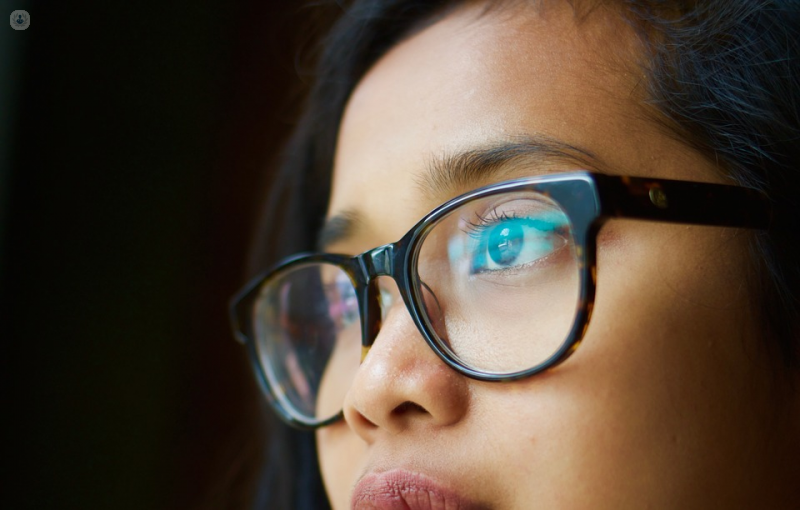


What is aniridia?
Aniridia is a hereditary and congenital eye disorder characterised by incomplete development of the iris, usually occurring in both eyes.
Although etymologically speaking the term “aniridia” suggests that no iris is present, it actually means that part of the iris is not fully formed because of incomplete development.

Prognosis
It is quite difficult to give general data about the prognosis, given the large variation between individuals.
Hence, the pathology is managed in to completely individualised manner. Furthermore, given the low incidence of the pathology, results cannot be generalised.
Symptoms
The incomplete formation of the iris leads to impaired vision, which may be reduced by up to 20% in some cases. Furthermore, aniridia may lead to diverse visual diseases such as glaucoma or cataracts.
Common symptoms are:
- Very large pupils from birth.
- Photophobia
- Glaucoma: In around half of cases, eyes with aniridia have difficulty draining the liquid of the eye.
- Nystagmus
- Loss of corneal transparency
- Lack of development of the optic nerve and the macula, the central area of the retina responsible for detailed vision. If it’s associated with aniridia, it can cause low visual acuity.
- Cataracts
- In some cases, aniridia may be associated with the presence of kidney tumours.
Testing for aniridia
The first diagnostic test, performed on newborns, is visual, given that the baby closes its eyes in the presence of light (photophobia). This is the first manifestation that can be assessed, although the ophthalmologist should check for and determine the severity, and also the possible associated impairments.
There are several tests for a correct diagnosis:
- Chromosome banding
- Fluorescent in situ hybridisation (FISH)
- Renal ultrasound examinations
- Abdomen and brain images
What are the causes of aniridia?
Possible causes are:
- Hereditary
- Spontaneous mutation: The pathology is associated with mutations in the PAX6 gene, which is involved in the development of the eye.
In addition to an underdeveloped iris, the patient’s eye may be underdeveloped in general, including a little-developed retina.
Can it be prevented?
Aniridia is a hereditary and congenital eye disorder and as such it cannot be prevented.
It is important to carry out a genetic diagnosis in infants born with the disease in order to know its severity. In addition, exhaustive annual examinations by specialist ophthalmologists and paediatricians are required to detect and treat any associated pathologies in a timely manner, thereby improving the patient’s quality of life for a longer period of time.
Treatment of aniridia
Currently, there is no specific treatment for this disease. Given that many diseases are associated with aniridia, every patient should receive treatment according to their symptoms.
In summary, there is no single treatment for all symptoms of aniridia; therefore, each symptom needs to be treated separately.
One option is cosmetic contact lenses, but current eye microsurgery can, in many cases, reconstruct the iris and the pupil, when the defect is partial. When the defect is total or subtotal, one option is the use of 90° or 180° ring implants to form a complete iris. The most innovative option is the Artificial Iris (Dr. Schmidt, Humanoptics), a flexible iris with personalised photograph-based colouration that can be implanted without the need for sutures.
Which specialist treats it?
The ophthalmologist is the specialist who helps to prevent, diagnose and treat diseases affecting the eyes and vision, among them aniridia.
The eyes are the key structures involved in vision and are susceptible to many pathological processes throughout life. Ophthalmology seeks to preserve every individual’s visual capacity, via medical or surgical techniques, or the aid of external elements such as glasses or contact lenses.